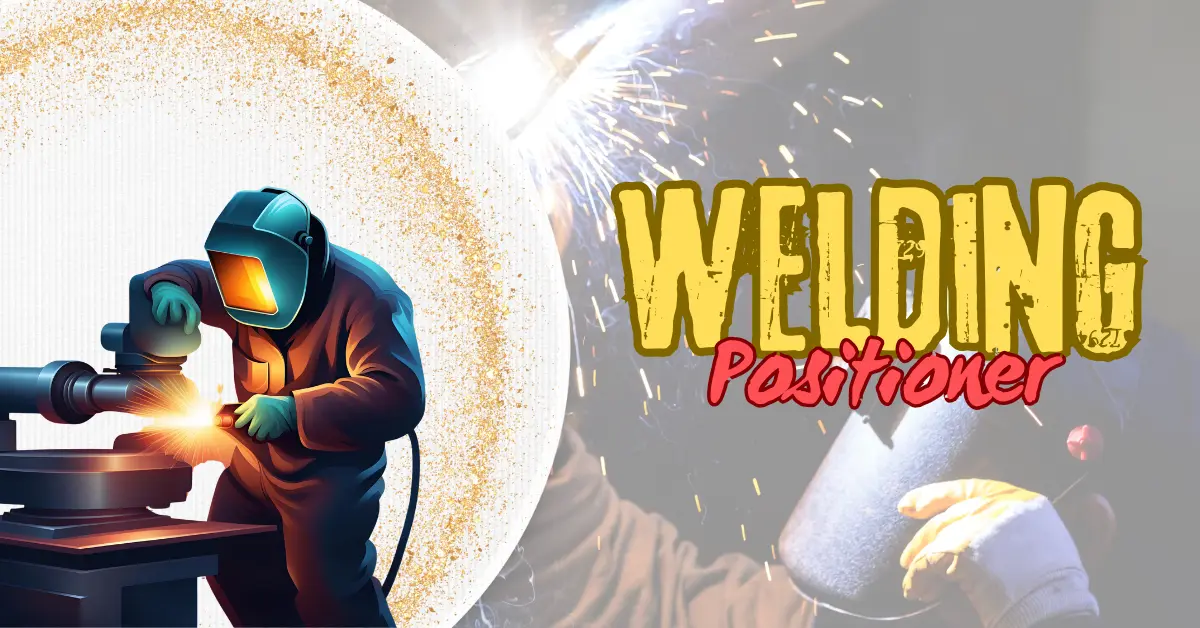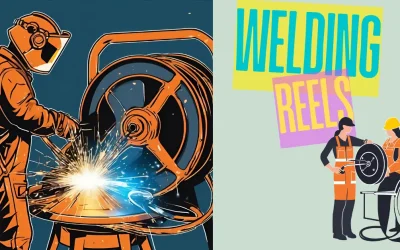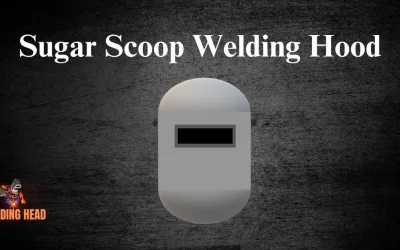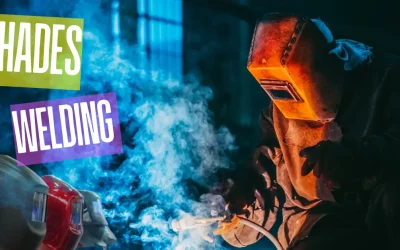Tired of spending hours positioning your workpiece for welding? Say greetings to the welding positioner.
A welding positioner is a device that not only makes a welder’s life easy by saving time from rework but also provides consistent weld with quality.
In this article, you will get to know what is welding positioner is, its components, and its types.
What is a Welding Positioner?
A welding positioner is a mechanical device used for tilting, rotating, or repositioning the workpiece and allows a welder to weld it at the ideal or optimal position.
Most people may confuse it with a welding table. A welding table is typically a piece of heavy metal that is used to hold workpieces only in one position often using magnetic clamps.
On the other hand, a welding positioner is a more advanced tool and can adjust the workpiece at any angle based on the available features.
Components of Welding Positioner
Welding positioner typically consists of several components so that welding can be done at optimal angles while securely holding, tilting, and rotating of workpiece:
Base or Frame:
This is the foundation part of a positioner. The base or frame is the main component that offers stability and support to the welding positioner and ensures that a workpiece stays secure during the welding process. Based on the requirement, the base/frame of the welding positioner is designed to handle the specific weight of a workpiece so that smooth handling can be done by absorbing vibration.
Turntable or Chuck:
The turntable serves as a rotating platform for the positioner and is responsible for holding the workpiece. This controlled rotation allows for welding efficiently and provides access to different areas of the workpiece effortlessly.
Chuck uses ca lamping mechanism mounted on the turntable. It can be three jaws, four jaws, etc., providing great stability to the workpiece while being rotated. Some positioners are equipped with an adjustable chuck offering to accommodate different sizes of workpieces.
Motor and Control System:
A motorized welding positioner is equipped with this dynamic duo. Enabling a welder to weld the workpiece with great precision, the welding positioner is equipped with a motor that controls the rotation and tilt of the turntable.
A control system is used to regulate the movement of the welding positioner. It is used to adjust the settings such as rotating direction, speed, and angle. This feature helps the welder to gain precise control of the workpiece.
Clamp or Fixture:
Unwanted movement of the workpiece is obviously the main concern to prevent while being rotated or tilted. Therefore, to hold the workpiece securely on the turntable or chuck positioner use a reliable fixture or clamping mechanism. This ensures that the workpiece will remain firmly in the applied position and provide consistent weld quality.
Types of Welding Positioner
It was just the brief information regarding typical fundamental parts of welding positioner, there may be more or less parts based on the types of positioners.
Let’s discuss common types of welding positioners for light-duty and heavy-duty workpieces below:
1) Headstock Tailstock Welding Positioner
The Head and Tailstock welding positioner is a more advanced heavy-duty tool utilized for welding jobs of heavy materials such as large cylindrical objects, beams, or any asymmetrical workpiece. This positioner allows the workpiece to rotate in the x-axis. It is widely used in industries, the shipping sector, the aerospace sector, and for pipe and tube welding jobs being involvement of cylindrical workpieces. It consists of two primary components:
a) Headstock:
This part is placed at one end and houses the main drive mechanism making it a motorized part.
b) Tailstock
This part is placed opposite of headstock and may be motorized or manual. This part serves as a supporting point for the workpiece to maintain the stability of large and heavy-duty workpieces.
Both these components together provide balance and stability to larger workpieces for smooth weld quality while being tilted and rotated.
2) Rotary Welding Positioner
This is another common welding positioner useful for both DIY projects and a slightly heavier task. Rotary positioner allows a welder to work with great flexibility and weld quality with the help of 360o rotation on the x-axis or y-axis and at the most common tilt angle of 0 – 90 degrees. Based on these features, positioners are categorized as:
a) Horizontal Rotary Positioner
A Horizontal rotary positioner rotates the workpiece on the x-axis providing easy access to a welder to weld the pipes or heavy machinery workpieces. This positioner is closely related to a turntable welding positioner being a single-axis rotating device. These may differ in design.
b) Vertical Rotary Positioner
A Vertical rotary positioner rotates the workpiece on the y-axis providing easy access to a welder to weld the larger tank-type objects and other things. This positioner is closely related to a turntable welding positioner being a single-axis rotating device. These may differ in design.
c) Tilting Rotary Positioner
A Tilting Rotary or Tilt Rotator welding positioner offers both rotating and tilting mechanisms. This positioner comes with 360-degree rotation and the most common tilt angle of 0 to 90 degrees. A positioner with a tilting angle other than 0 to 90 degrees is also available based on their product prices. For instance, an L-type rotary welding positioner is available with a tilt angle of 360 degrees but is very expensive compared to other rotary welding positioners. This positioner is often equipped with a manual or automatic adjustable chuck allowing a welder to work on a variety of workpieces with great comfort at great position and optimal angle.
Other than above mentioned types there are other variants available for welding positioners based on their features. For example, the turntable welding positioner is almost the same as the horizontal rotary positioner, multi-axis welding positioner is almost the same as the tilt rotator welding positioner. The point to note is that multiple variants could be available but functionality and access to multiple axes are the same as rotary welding positioner.
Now for more clarity regarding the features of welding positioners, I have discussed some products of verified brands below:
VEVOR Rotary Welding Positioner HD – 10
VEVOR’s HD-10 product for rotary welding positioners is the best choice for DIY and light-duty workpiece welding projects. Let’s explore the features of VEVOR HD-10 positioner below:
Loading Capacity: Provides horizontal loading capacity of 22lbs /10 kg and 11lbs / 5kg as vertical loading capacity.
Turntable Rotation: Offers smooth 360o rotation of turntable with 1-12 rpm stepless speed adjustment
Turntable Tilt Angle: 0 – 90o tilt angle allows to work at a desirable fixed position with butterfly bolt along with foot pedal for great flexibility.
Motor: Equipped with 20W low-speed drive high-quality motor.
Welding Accuracy: Welding K01 – 63 three-jaw chuck provides great stability and precision in weld quality with a clamping range of 2 – 58 mm and supporting range of 22 – 50 mm leading to enhanced welding accuracy.
Material: Made of rugged carbon steel for a robust and durable structure offering corrosion resistance.
VEVOR Rotary Welding Positioner HD – 30
VEVOR’s HD-30 product for rotary welding positioner is a great option for metal, large pipes, heavy machinery, automated, and various other welding projects but of course with some limitations of loading capacity i.e. 30 kg. This product offers great features and an effortless welding experience.
Let’s have a look at some intriguing qualities of VEVOR’s HD-30:
Loading Capacity: Provides strong horizontal loading capacity of 66.1 lbs / 30 kg and 33.1 lbs / 15 kg as vertical loading capacity.
Turntable Rotation: Offers smooth 360o rotation of turntable with 1-12 rpm stepless speed adjustment
Turntable Tilt Angle: 0 – 90o tilt angle allows to work at a desirable fixed position with the handle wheel along with the foot pedal for great flexibility.
Motor: Equipped with 80W low speed drive high quality motor.
Welding Accuracy: Welding KD 200 three-jaw chuck provides great stability and precision in weld quality with a clamping range of 10 – 210 mm and supporting range of 80 – 190 mm leading to enhanced welding accuracy. Adjustable welding gun holder also provides precise welding quality.
Material: Made of rugged carbon steel for a robust and durable structure offering corrosion resistance.
Welding Positioner D-TLP-L-500
DUMETA’s L-type welding positioner is one of the best products for a variety of moderately heavy workpieces. The industrial sector loves the great features of this product. Let’s explore the features below.
Loading Capacity: One of the great features is that D-TLP-L-500 can bear the 500 kg loading capacity (1,102 lbs) making it suitable for smaller to medium-sized workpieces in a variety of industries.
Turntable Rotation & Tilt Angle: Offers smooth 360o rotation of turntable along with 360o tilt angle. This premium feature allows the welder to for welding of larger components at a desirable fixed position, enabling the welder to correct ergonomic posture.





